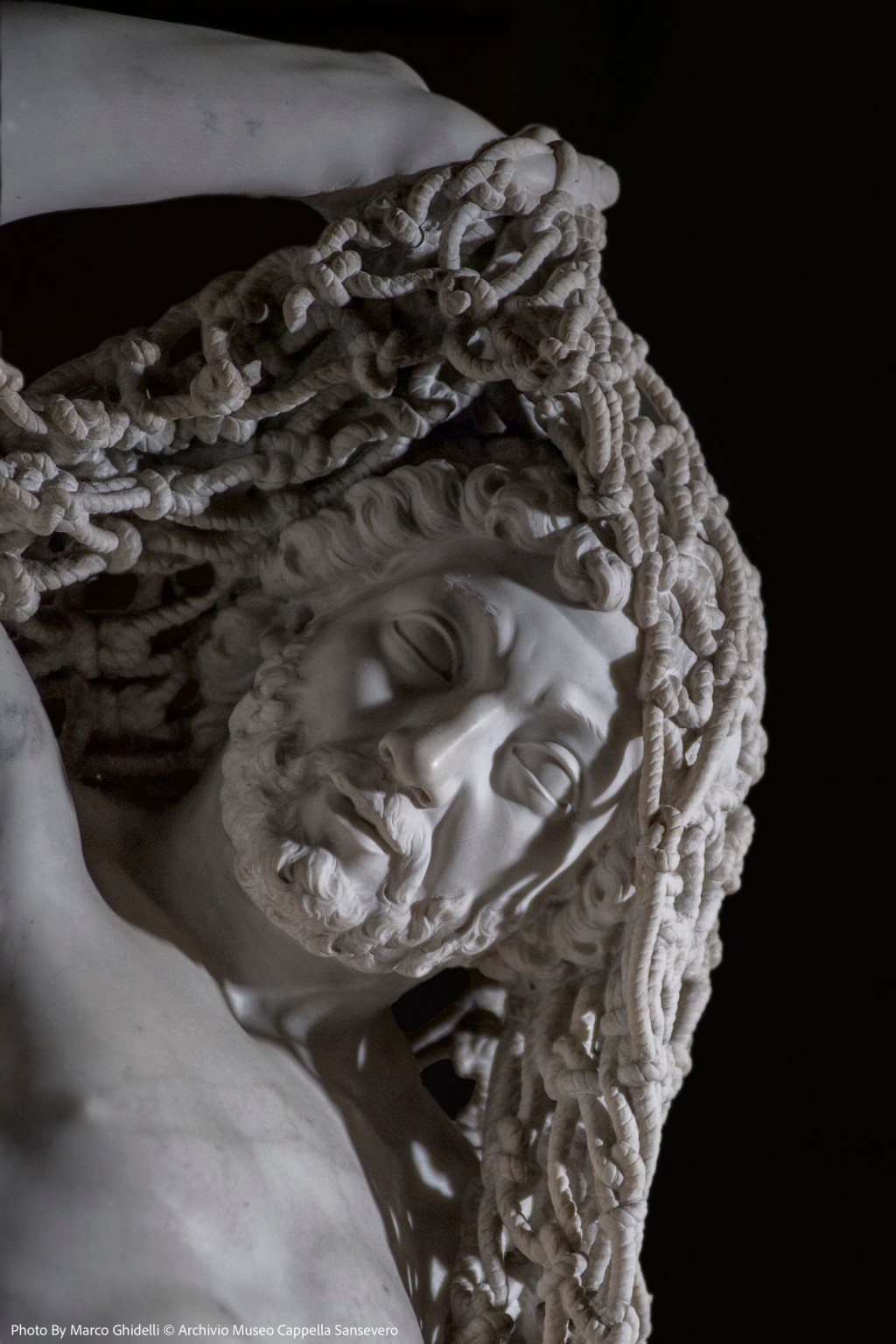A single glance at Francesco Queirolo’s masterpiece, “Il Disinganno,” can help us understand some of the fundamental teachings of the Christian life. This beyond-exquisite sculpture, carved from a single block of marble, is a powerful allegory of liberation from the entanglements of error and sin.
The Italian disingannomight be translated as “the release from error.”
At the center of the scene stands a fisherman entangled in a net: an allegoric representation of the many burdens we carry, the choices that bind us, the temptations that threaten to ensnare us, and the heavy weight of sin.
But right next to the fisherman, hope emerges in the form of an angelic figure bathed in divine light. The angel reaches out with a purposeful hand and gently frees the fisherman from the grasp of the net. This act of liberation reflects the longing for freedom from sin that is at the heart of the human experience.
The inscription at the base of the sculpture is the key that unlocks the full meaning of the masterpiece. Meticulously crafted from Latin biblical quotations, it deepens the understanding of this liberation. Each carefully chosen phrase builds upon the other, offering a decisive message of transformation.
God’s plan and his promise
The first quote reads Vincula Tua Disrumpam. It is a quote from the book of Nahum (1:13). It translates as “I will break your bonds asunder,” reminding the spectator of God’s promise to break the chains that hold us captive. Faith eventually leads to freedom from the burdens that, as Augustine would famously say, pull and weigh us down.
The second quotation, Vincula tenebrarum et longae noctis (quibus es) compeditus, is found in Wisdom 17:2. It translates as “being bound with the chains of darkness and a long night.” The phrase obviously refers to the kind of “night” that can cloud our judgment and lead us astray. In particular, it can be a reminder of the challenges we face on our Christian journey – or whenever we intend to get rid of a bad habit, acknowledging the shadows that can linger within us.
Finally, the last quotation, Ut non cum hoc mundo damnebis, is taken from Paul’s first letter to the Corinthians (1 Cor. 11:32): “so that you will not be condemned with this world.” The quote underscores the ultimate purpose of liberation from error – that is, disenganno. The quote reminds us of the transformative potential of Christ through our baptism, urging us to turn away from the entanglements of the world.
By interweaving these biblical excerpts, Queirolo masterfully portrays the essence of the Christian experience. The astonishing sculpture serves as a powerful reminder that we can indeed in Christ be freed from the shackles of sin and error and find true freedom.
As a marvelous example of sacred art, the masterpiece not only invites but also aids us as we reflect on the release from error, and allow the beauty of freedom to guide us on our individual and ecclesial journeys of spiritual renewal.








